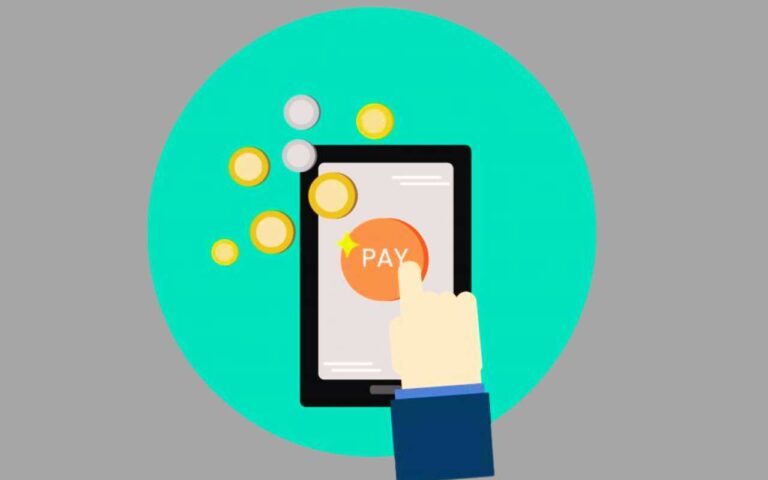The future of Digital Banking has transformed the financial landscape, offering unprecedented convenience, security, and efficiency. Over the past few decades, the evolution of digital banking technologies has not only changed the way we manage our finances but also reshaped the global economy. This article delves into the history of digital banking, explores the current state of technology, and examines what the future holds for this rapidly evolving industry.
The Birth of Digital Banking: A Historical Overview
The journey of digital banking began in the 1960s with the advent of electronic funds transfer (EFT) systems. These early systems allowed banks to transfer money electronically between accounts, paving the way for the development of automated teller machines (ATMs) in the 1970s. ATMs revolutionized banking by allowing customers to withdraw cash and check account balances 24/7, independent of traditional bank hours. (History of internet banking)
The 1980s saw the introduction of telephone banking, which enabled customers to conduct basic transactions over the phone. This was followed by the launch of online banking in the mid-1990s, a monumental step that allowed customers to manage their finances from the comfort of their homes. Online banking services initially included checking account balances, transferring funds, and paying bills.
As the internet grew in popularity, so did online banking. By the early 2000s, banks began to offer more sophisticated digital services, such as online mortgage applications, investment management, and real-time account monitoring. The rise of the smartphone in the late 2000s marked another significant milestone, leading to the development of mobile banking apps that brought banking services directly to users’ fingertips.
The Present: The Age of Digital Transformation
Today, digital banking is an integral part of everyday life. Mobile banking apps have become essential tools for managing personal finances, providing features such as mobile check deposits, budgeting tools, and instant money transfers. The integration of artificial intelligence (AI) and machine learning (ML) into banking apps has further enhanced the user experience, offering personalized financial advice, fraud detection, and customer support through AI-powered chatbots.
One of the most significant advancements in digital banking is the emergence of fintech companies. These tech-savvy startups have disrupted traditional banking by offering innovative financial services that are faster, cheaper, and more accessible. From peer-to-peer lending platforms to robo-advisors and blockchain-based payment systems, fintech has expanded the possibilities of what digital banking can offer.
Open banking is another transformative trend that has gained traction in recent years. By allowing third-party developers to build applications and services around a financial institution, open banking promotes transparency and fosters innovation. Customers can now manage multiple bank accounts through a single app, access tailored financial products, and enjoy more personalized services.
Security has also become a top priority in digital banking. With the rise of cyber threats, banks have implemented advanced encryption methods, multi-factor authentication, and biometric verification to protect customer data and transactions. Regulatory frameworks like the General Data Protection Regulation (GDPR) in Europe and the Payment Services Directive 2 (PSD2) have also played a crucial role in ensuring data privacy and security in the digital banking ecosystem.

The Future: What Lies Ahead for Digital Banking?
The future of digital banking promises to be even more exciting, with emerging technologies poised to revolutionize the industry further. Here are some trends and technologies that are expected to shape the Future of Digital Banking: (Future of banking 2030)
1. Artificial Intelligence and Machine Learning:
AI and ML will continue to play a pivotal role in digital banking. Banks are expected to leverage these technologies to offer more personalized services, such as tailored financial advice, predictive analytics, and automated investment management. AI-driven chatbots and virtual assistants will become even more sophisticated, providing instant, human-like customer support around the clock. (Future of Digital Banking)
2. Blockchain and Cryptocurrencies:
Blockchain technology has the potential to transform digital banking by offering decentralized, secure, and transparent financial transactions. Cryptocurrencies like Bitcoin and Ethereum are already challenging traditional banking systems, and their adoption is expected to grow in the coming years. Central banks are also exploring the possibility of launching digital currencies, which could revolutionize how money is transferred and stored. (Future of Digital Banking)
3. Biometric Authentication:
As security concerns continue to grow, biometric authentication methods such as fingerprint scanning, facial recognition, and voice recognition will become more prevalent in digital banking. These technologies offer a higher level of security compared to traditional passwords and are expected to become the standard for verifying identities in the future. (Future of Digital Banking)
4. Enhanced Customer Experience:
The future of digital banking will be centered around the customer experience. Banks will invest in technologies that offer seamless, intuitive, and personalized experiences. This could include everything from virtual reality (VR) banking environments to AI-driven financial wellness programs that help customers achieve their financial goals. (Future of Digital Banking)
The Evolution of Digital Banking: From ATMs to Mobile Apps
5. Regulatory Changes:
As digital banking continues to evolve, regulatory frameworks will need to adapt to new technologies and business models. Governments and regulatory bodies are expected to introduce new rules and guidelines to ensure that digital banking remains secure, transparent, and fair for all users. (Future of Digital Banking)
6. Financial Inclusion:
One of the most promising aspects of digital banking is its potential to promote financial inclusion. By leveraging mobile technology and internet connectivity, digital banking services can reach underserved populations in remote and rural areas. Fintech companies and banks are expected to collaborate to develop innovative solutions that provide access to financial services for everyone, regardless of their location or economic status. (Future of Digital Banking)
7. Cloud Computing:
Cloud computing has revolutionized the way banks store and manage data. By moving to the cloud, banks can scale their operations more efficiently, reduce costs, and enhance data security. Cloud-based banking platforms also enable seamless integration with third-party services, fostering innovation in digital banking. (Future of Digital Banking)
6. Quantum Computing:
Quantum computing, though still in its early stages, could have a profound impact on digital banking in the future. Quantum computers have the potential to solve complex problems at unprecedented speeds, which could revolutionize areas such as risk assessment, fraud detection, and encryption. However, quantum computing also poses a challenge to existing cryptographic methods, necessitating the development of quantum-resistant security protocols. (Future of Digital Banking)







One Comment